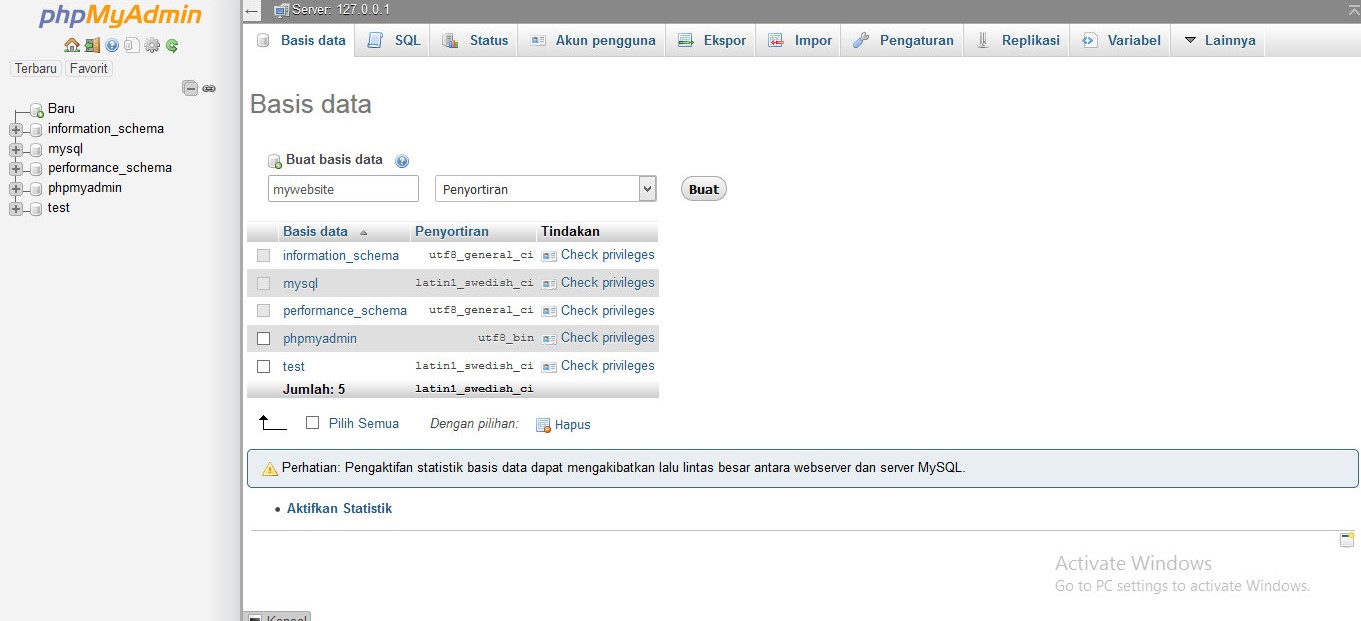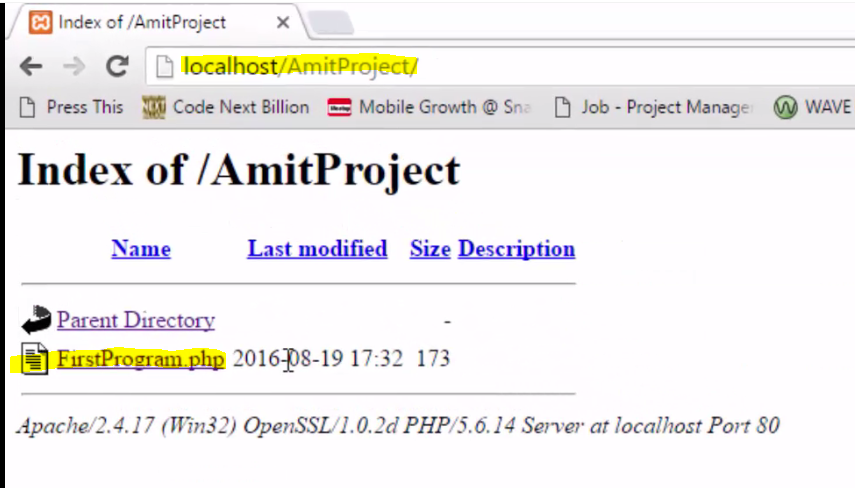
- #Localhost to xampp how to
- #Localhost to xampp full
- #Localhost to xampp code
- #Localhost to xampp password
Check your phpinfo(), look for the value of 'Loaded Configuration File' (in my case : E:\Program Files\wamp\bin\apache\apache2.4.2\bin\php.ini) and in this file, uncomment the line extension=php_openssl.dll. This package, created by apache friends, offers services as a local host or local server. In such case, you must enable the OpenSSL extension. Note : you may have a problem sending the mail, like 'Warning: stream_socket_enable_crypto(): this stream does not support SSL/crypto'. Follow the instructions and give Next it.
#Localhost to xampp how to
If you need to use another SMTP server, you can modify the values in $smtp. How to Enable Valid SSL in localhost for XAMPP Windows XAMPP. You can also add 'CC', 'BCC' fields etc.Įxamples and documentation can be found on Github. $mailer->isHTML(true) //Mail body contains HTML tagsĮcho 'Error sending mail : '. $mailer->addAddress($to) // Add a recipient $mailer->FromName = 'Your Name' //Optional $mailer->SMTPAuth = true //We need to authenticate $content = 'This is the HTML message body in bold!' $subject = 'This is a test email sent with PHPMailer'
#Localhost to xampp password
'password' => 'XXXXXXXX' //Your GMail password Then create the main script (I called it 'index.php').Ĭontent of index.php : //Your GMail adress

#Localhost to xampp code
We finally have to add a user with all privileges for each machine (server included) in PhpMyAdmin, in our example we have to add and each machine can work freely on their local copy of the project, using a git versioning on a remote common repository, connecting on a single local DB on the server machine.So first, you have to download the source code of PHPMailer. Give name and description + finish buttonĪt this point if server machine starts XAMPP, the client can reach the server using its browser using the url as it was on the server machine, so it can reach phpadmin and DBs ( ) or any website in the htdocs folder ( ).Īnyway, it could be still impossible for any machine to start its own XAMMP, open a local copy of the same project and connect it to the DB on the server machine.Remote IP address: 192.168.1.11 (client machine).Protocol: TCP, Local port: Specific port – 80.I've searched all possible solution but nothing gonna workout. I've gone through all the suggestions provided in the solution. In each step of the wizard to create rule choose: 1 I am facing same problem to the thread. Please see the Reference links at the end if in confusion about some step. If you find it, right click on it and choose disable.Īfter that, staying on Incoming rules section, click on New rule… in the upright corner. This has been tested with XAMPP (PHP 7.0.8) on Windows 7. Then click on Inbound rules and look for a blocking rule (red prohibition sign) that says “Apache HTTP Server”. In next window click on advanced settings. To do so open your firewall configuration, in this example I use windows firewall: click on windows logo, type “firewall” then press enter.

To achieve that I had to turn off a blocking rule and adding one to open port 80.

This can be different basing on your machine and firewall settings.Īnyway, port 80 must be reachable from client but not open for anybody from anywhere. To reach the files you need to change, click on the Apache Config button in the XAMPP Control Panel as the image shows.įIRST CHANGE: Now click on the nf and look for the part where it saysĮnter fullscreen mode Exit fullscreen mode Step 3 – Firewall Settings I suggest to make a backup copy of the files we are going to change. You need to change some XAMPP server configuration in the server machine.
#Localhost to xampp full
There are many ways to do so and internet is full of good tutorials.Īnd here’s an article: STEP 2 – Change some XAMPP settingsĪfter setting static IP addresses let’s make an example assuming we have a machine sharing its XAMPP (which I’ll name “server” from now on) with IP 192.168.1.10 and another machine that will connect to the server (which I’ll name “client” from now on) with IP 192.168.1.11

That’s not mandatory, but it’s the easiest and safest way to go. STEP 1 – Getting static IPs for your machines Hope this can help even with different environment too. I found many similar tutorials online, but none was merging all I needed, so I decided to share my solution. That last feature was the most important for me to achieve because I needed to work with a teammate on the same project, each one on a local copy but both connected to the same DB, managing changes with a git repository on Github. In this simple step-by-step tutorial I’m gonna explain how to share a local server (using XAMPP) with your local network in order to share DB, folders in httpdocs (local websites) and even start a XAMPP server on other machines running a local website that connects to a DB in the shared server.


 0 kommentar(er)
0 kommentar(er)
